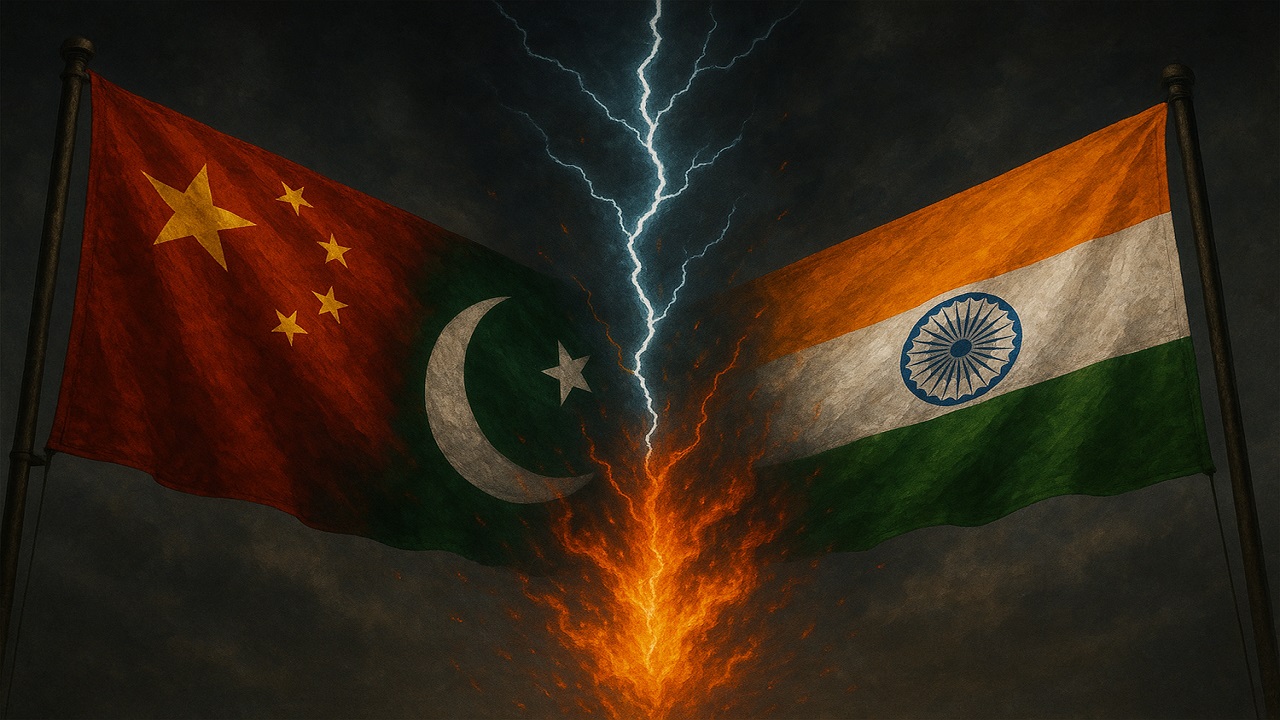China-Pakistan Collusion: Strategic Implications for India
Context
-
Operation Sindoor (May 7–10, 2025) revealed a concerning development in regional security: real-time military coordination between China and Pakistan.
-
Confirmed by Deputy Chief of Army Staff Lt. Gen. Rahul R. Singh, the operation marked a shift in the China-Pakistan nexus from strategic partnership to operational-level collusion.
-
This event calls for a strategic reassessment of India’s military posture, foreign policy, and its preparedness for dealing with dual-front threats.
-
For UPSC, it highlights important aspects of India’s national security, neighbourhood diplomacy, grey-zone warfare, and defence modernization.
Nature of China-Pakistan Collusion
1. From Passive Partnership to Active Tactical Alliance
-
In previous conflicts (1965, 1971, 1999), China supported Pakistan only diplomatically.
-
Operation Sindoor showed:
-
Operational support to Pakistan by China.
-
Use of real-time ISR (Intelligence, Surveillance, Reconnaissance) capabilities.
-
Deployment of Chinese-made platforms in battlefield conditions.
-
-
Represents a move towards grey-zone warfare—China empowers Pakistan without direct engagement, maintaining plausible deniability.
2. Digital and Informational Collusion
-
Chinese state media and influencers amplified Pakistani propaganda.
-
Coordinated with Pakistan’s Inter-Services Public Relations (ISPR) to:
-
Spread exaggerated reports of Indian losses.
-
Frame India’s actions as aggressive and disproportionate.
-
Conceal the terrorist origins of the conflict.
-
Strategic and Operational Implications for India
1. Shift in Deterrence Dynamics
-
China’s indirect involvement complicates India’s ability to respond strategically.
-
New strategic normal:
-
India retains the ability to retaliate conventionally.
-
China and Pakistan are building a joint operational posture under the nuclear overhang.
-
2. China’s Arms Industry Gaining Combat Validation
-
Post-conflict, Pakistan announced procurement of:
-
J-35 stealth fighters
-
KJ-500 AEW&C aircraft
-
HQ-19 missile defence systems
-
-
China’s weapon systems were combat-tested, giving:
-
Credibility to its arms exports
-
Incentives for future grey-zone tactics
-
3. India Facing Two Active Fronts
-
Despite partial disengagement in Eastern Ladakh, Chinese forces remain deployed.
-
The 2021 LoC ceasefire with Pakistan has collapsed.
-
India now needs:
-
Troop deployment on both western and northern borders
-
Enhanced ISR and logistical support
-
Seamless coordination across two live borders
-
Strategic Recommendations for India
1. Recalibrate China Policy
-
China’s military enabling of Pakistan should impact India-China diplomatic engagements.
-
Like India’s “no talks under terror” stance with Pakistan, a similar position should apply to Beijing’s collusion.
2. Expand and Modernize Conventional Capabilities
-
India’s defence spending has dropped from 17.1% to 13% of central government expenditure over the past decade.
-
Urgent need to:
-
Enhance investment in ISR, drones, cyber operations, and network-centric warfare
-
3. Avoid Predictable Military Responses
-
India should:
-
Diversify its response tools—economic sanctions, covert actions, treaty-based pressure
-
Consider reviewing the Indus Waters Treaty
-
Maintain strategic ambiguity by not publicly signaling intent
-
4. Institutional Integration and Doctrinal Shift
-
Operation Sindoor must be seen as a template for future hybrid warfare.
-
Requires:
-
Inter-agency coordination
-
Military modernization
-
Doctrinal reforms to handle blurred threat domains (cyber, psychological, and kinetic)
-
Conclusion
-
Operation Sindoor marks a strategic turning point—collusion between China and Pakistan is now a lived battlefield reality, not just a theoretical threat.
-
India must respond with:
-
Hard power
-
Diplomatic firmness
-
Strategic foresight
-
-
The decisions made today will determine whether India can preserve regional strategic stability or remain reactive to a well-integrated adversarial axis.




Comments (0)